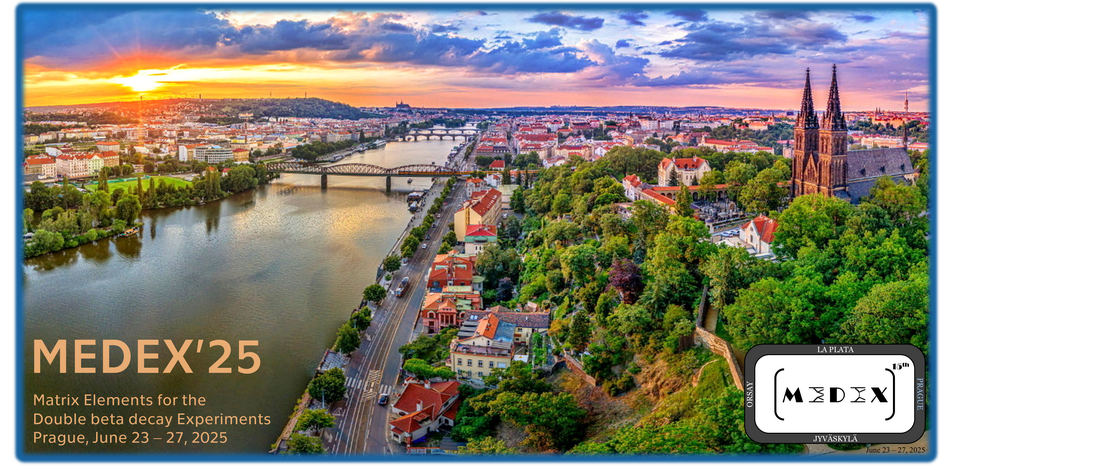Speaker
Description
Large-scale experiments like LEGEND are searching for the neutrinoless double beta decay of $^{76}$Ge. The measurement of the half-life of this process would give access to the neutrino mass using the nuclear matrix element. This can be expressed as a sum over all transitions along states of the intermediate nucleus $^{76}$As. Experimentally the contribution of the $^{76}$As ground state can be investigated via the branching ratios of its $\beta^-$ and electron capture decay branches. Energetically, the electron capture of $^{76}$As into the $^{76}$Ge ground state and first excited state are possible.
In an experimental study at TU Dresden the branching of $^{76}$As is investigated. $^{76}$As is produced via $^{75}$As(n,$\gamma$) on a thin As$_2$O$_3$ sample. A Silicon drift detector measures characteristic X-rays emitted by the Germanium atoms left with an inner vacancy after the electron capture. A HPGe detector with excellent energy resolution is sensitive to the 563 keV deexcitation gammas emitted after electron capture into the excited state. Investigation of coincident signals in both detectors allows to distinguish between both electron capture channels. The experimental procedure, analysis and preliminary results will be presented.

